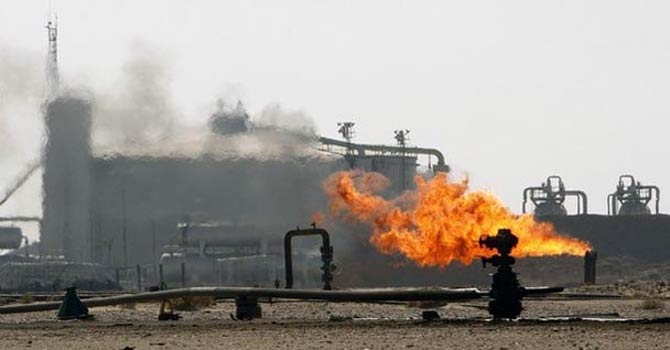ISLAMABAD: With the country’s gas production falling drastically, the energy ministry has lit the warning becons and submitted a report to Prime Minister Shehbaz Sharif. The report has claimed that Sui Northern Gas Pipelines Limited (SNGPL) will face 16 percent average depletion per annum while Sui Southern Gas Company Limited (SSGCL) to bear the brunt of 5%/annum gas depletion till the financial year (FY) 2024-25.
In response, the prime minister has advised the petroleum division to enhance the gas production activities to meet the gas needs. The production of indigenous natural gas has witnessed a drop alarmingly owing to reduction in the oil and gas exploration and production activities in the country, said sources.
Sources informed Profit that both the gas utilities (SNGPL & SSGCL) will also bear the brunt of decline in indigenous gas supplies from the gas fields because of natural depletion while this gas depletion trend will also continue in the years to come.
State of depletion
According to petroleum division’s projection, SNGPL to face the gas depletion of 652 Million Cubic Feet per Day (MMCFD) in 2022-23, 530 MMCFD in 2023-24, 427 MMCFD in 2024-25, 347 MMCFD in 2025-26 and its average depletion per annum will be 16 percent. Similarly, SSGCL to face gas depletion of 930MMCFD in 2022-23, 853 MMCFD in 2023-24, 840 MMCFD in 2024-25, 798 MMCFD in 2025-26 and its average depletion per annum will be 5 pc.
Sharing details of gas depletion during the last 08 years of SNGPL & SSGCL, sources said that SNGPL had faced gas depletion of 1,442 MMCFD in 2014-15, 1,404 MMCFD in 2015-16, 1,373 MMCFD in 2016-17, 1,262 MMCFD in 2017-18, 1,139 MMCFD in 2018-19,1,050 MMCFD in 2019-20, 930 MMCFD in 2020-21, and 770 MMCFD in 2021-22. And, SSGCL had faced gas depletion of 1,190 MMCFD in 2014-15, 1,283 MMCFD in 2015-16, 1,201 MMCFD in 2016-17, 1,198 MMCFD in 2018-19, 1,087 MMCFD in 2019-20, 1,060 MMCFD in 2020-21, and 875 MMCFD in 2021-22.
The SNGPL and the SSGCL were engaged in the transmission and distribution/sale of natural gas to their respective gas consumers under license from Oil and Gas Regulatory Authority (OGRA). In addition to gas development schemes, the two companies-SNGPL & SSGCL- have been providing gas connection to their customers based on annual targets provided by OGRA. However, since Financial Year (FY) 2015-16, the consumers gas prices were not adequately revised to be consistent with revenue requirements determined by OGRA which resulted in accumulation of revenue shortfall/tariff differential amounting to Rs 547 billion, as of March 2022.
Gas scarcity causes alarm in government
The sui companies were, therefore, found neither able to recover their investment on gas development schemes and new gas connections, earn any return on that investment not have sufficient gas to provide to the new and potential consumers, said the sources.
They added that the premier while chairing a meeting of the CCoE had observed that there was scarcity of gas in the country, therefore, no new connections would be provided; however, in case of gas development schemes where network had been partially laid down, the same may be completed to avoid wastage of money already incurred thereon. And, Minister for Finance & Revenue, while endorsing the observation of the chair, stated that only infrastructure of incomplete gas development schemes may be completed and no new gas connection may be provided.
Documents available with Profit disclosed that owing to the scarcity of local natural gas and present backlog of gas development schemes, the government has already decided that no new gas development schemes may be approved by any forum while all approved schemes by any forum will be shelved where no progress has been made or no work has been initiated. And, in order to avoid loss of asset laid to allow sui companies to capitalize the laid asset after its completion, incomplete gas development schemes, where work has already been initiated, may be completed while remaining within the available funds released by the government, however, no new connection may be provided under these schemes upon completion. However, the gas schemes under the policy of 5-kilometer radius of gas fields will continue subject to availability of funding from the government while companies would consider the viability of such schemes based on the depletion profile of producing fields.
























